Jean Johnstone’s artist’s books: a presentation to Special Collections staff
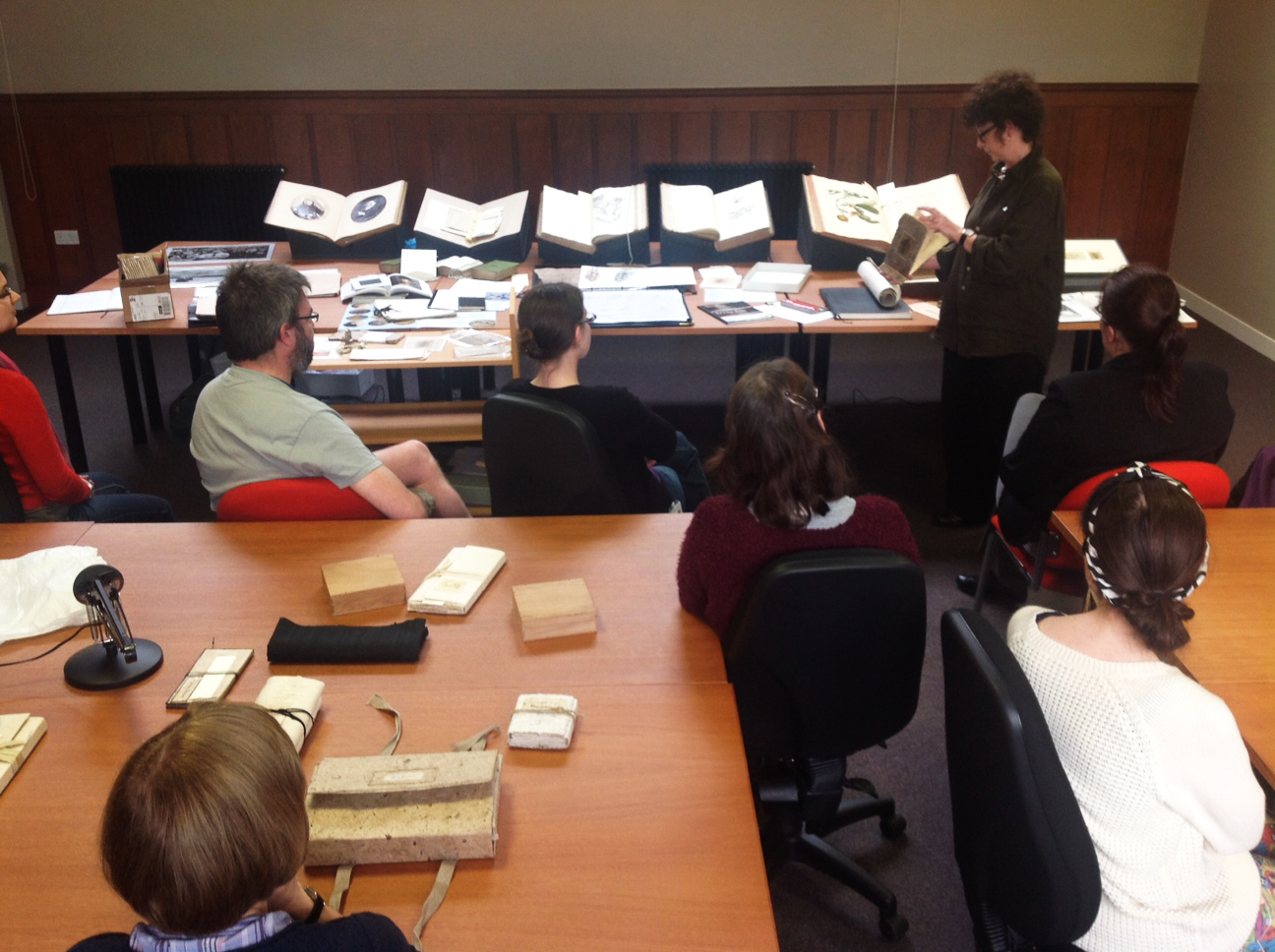
Recently, the staff of Special Collections were treated to a talk by local artist Jean Johnstone, who came to discuss a commissioned piece she is undertaking for and about the University Library and its Special Collections. I’d heard that Johnstone was much admired and that she created “artists’ books”, but I wasn’t sure what to expect when the talk began.
And I certainly didn’t expect what did happen: Johnstone distributed her books (her pieces of art!) around the tables we were seated at and encouraged us to spend a silent twenty minutes reading them and passing them around. I was immediately seized with panic. She can’t possibly want us to touch her art…can she?
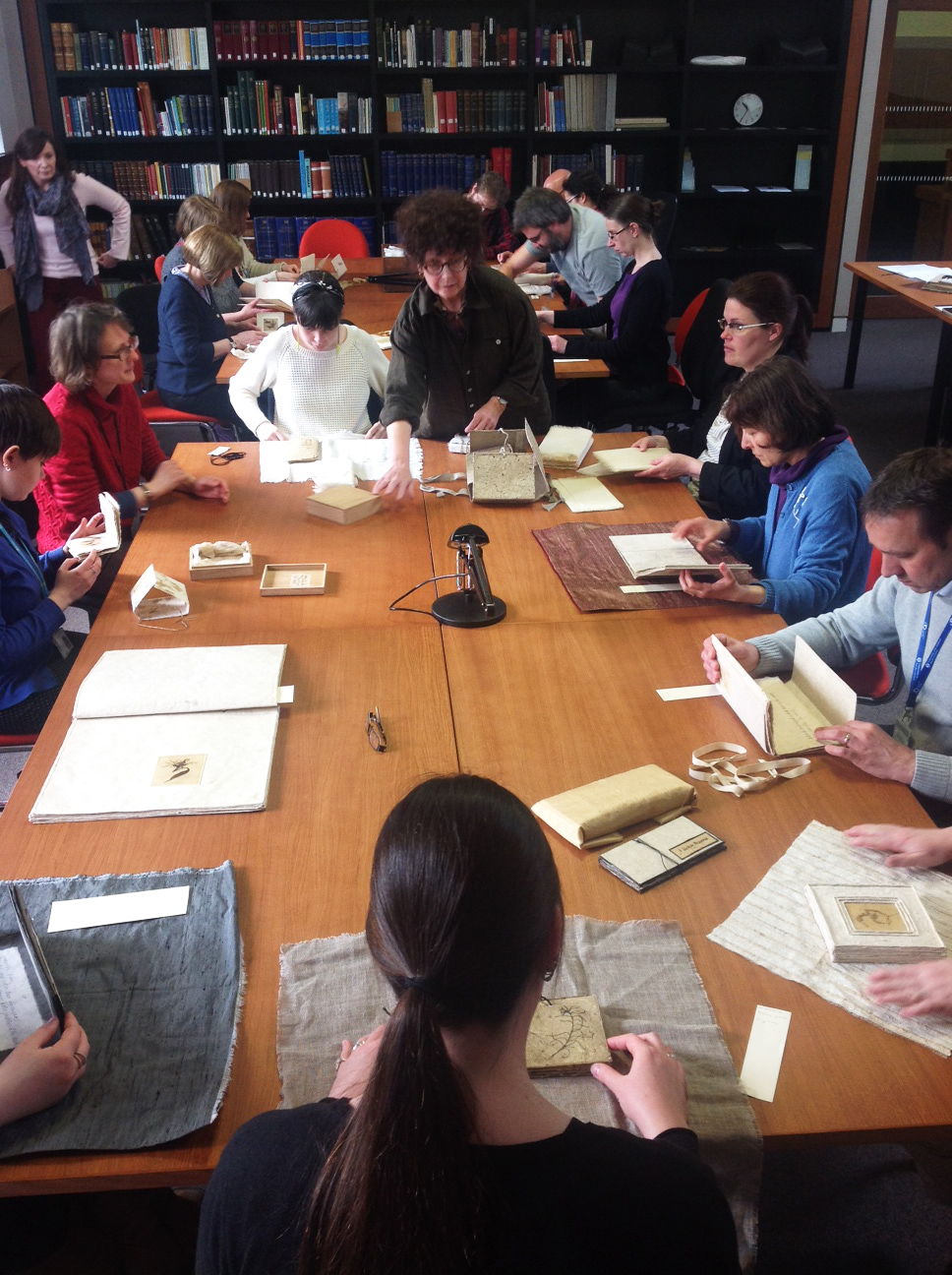
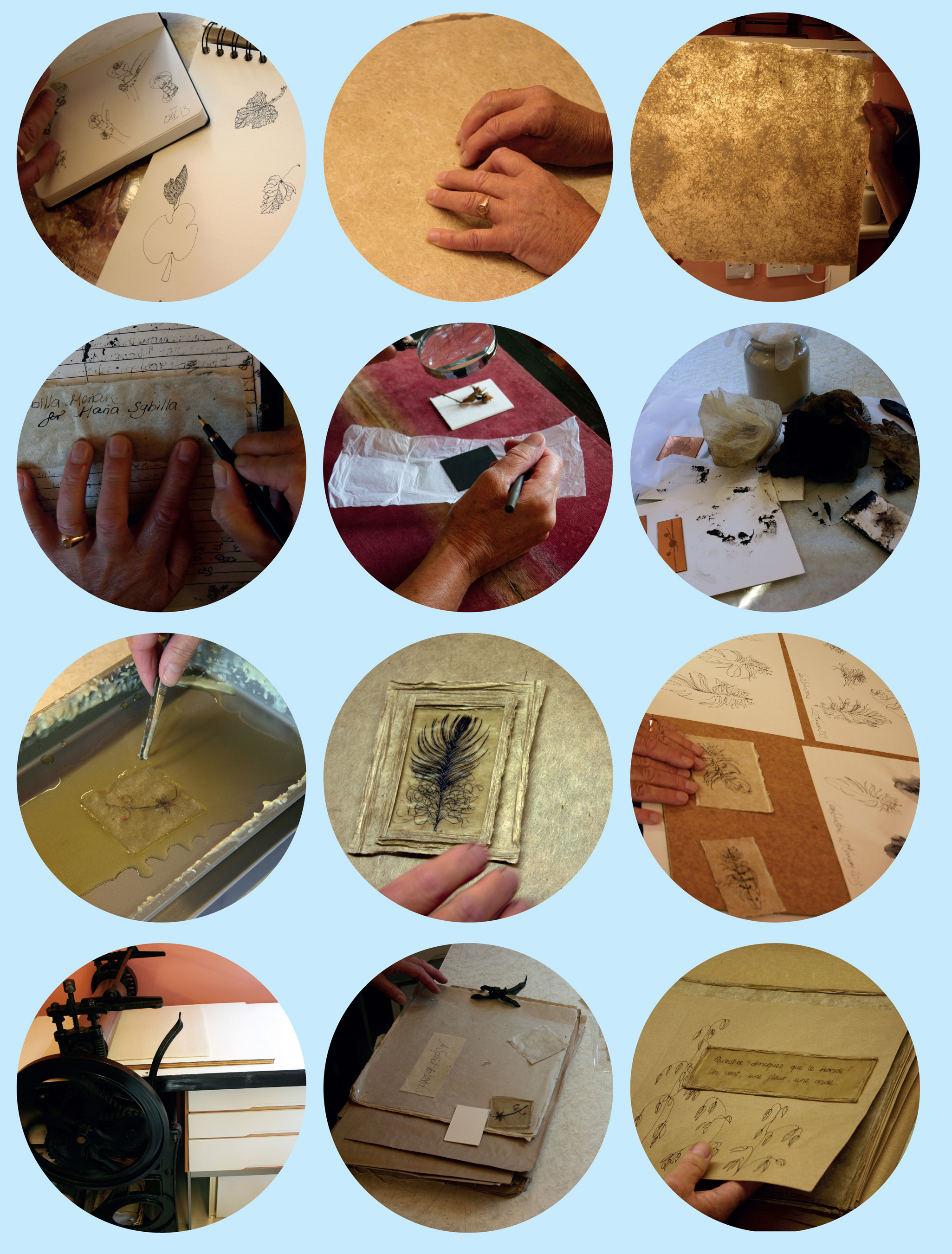
But she did. In fact, she kept reiterating that the books were meant to be read and encouraging us to flip through as many as we could. The books came in a variety of sizes and formats. Some were presented in handmade wooden boxes, others were wrapped in muslin or tied with a piece of leather string. Some had pages that folded out accordion-style, others turned crisply at the spine.
One of the most amazing and striking things about each book was the paper. Textured, handmade paper that differed slightly for each piece and that evoked different associations when touched. Some felt like bony fish scales, and made me think of the ocean. Some felt heavy and fibrous, and made me think of walking through a dense forest. Some felt slick and smelled like beeswax, and made me think of outdoor picnics and crusty pieces of bread covered with butter and honey. Each piece of paper was twisted through with its own sinews and veins; it came to life when touched.
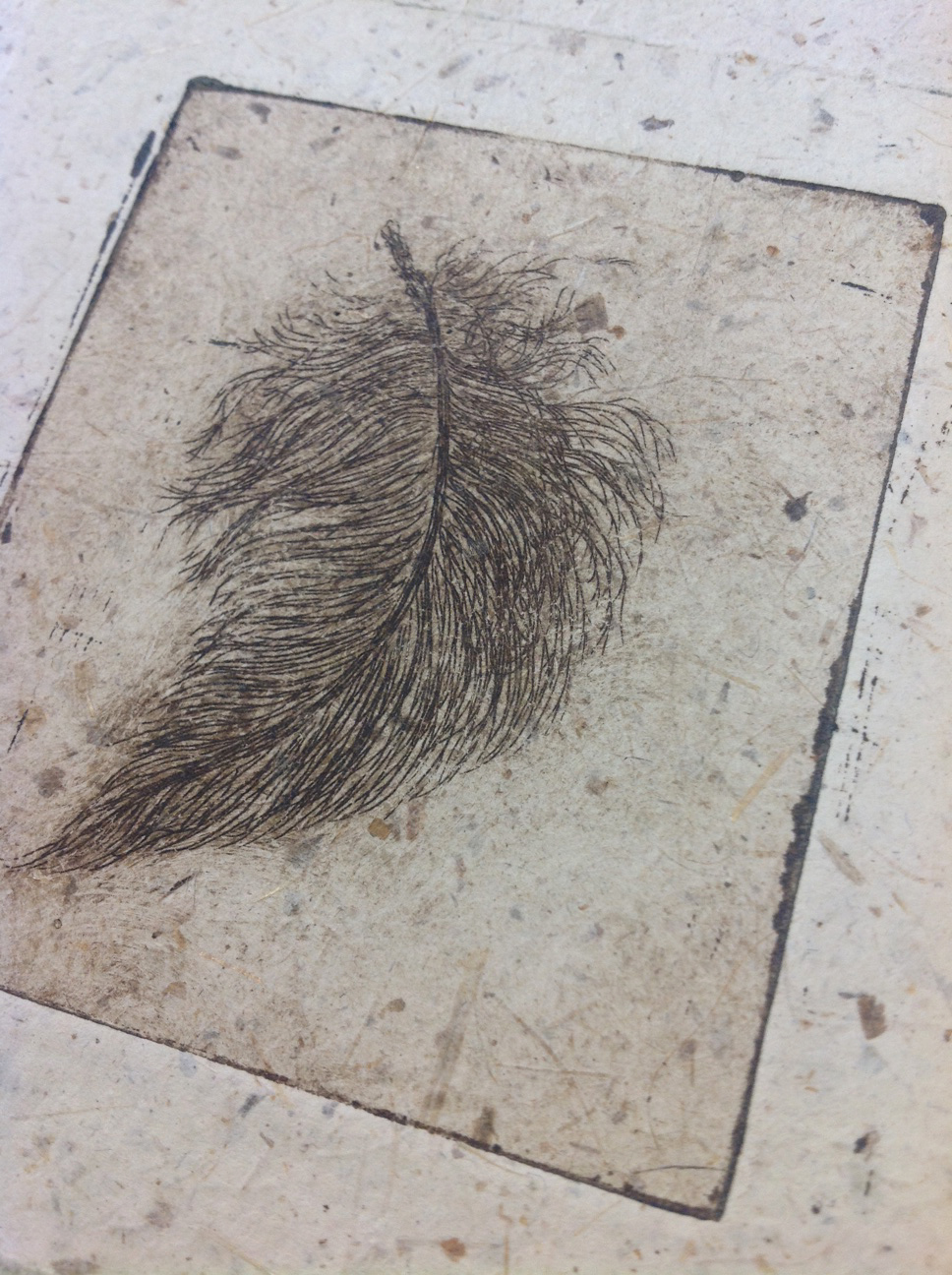
The tactile experience of the paper contributed to the visual experience of the books’ contents. Each book contained lines from a poem, spread out across several pages and interspersed with delicate pieces of art. For example, a detailed picture of a feather or a flower.
These books asked us to experience a poem carefully. To meticulously unwrap it and then to consider each line and accompanying picture. They asked us to slow down. It was an incredible way to contact poetry—to actually contact it with our fingertips.

And then, when we were done, Johnstone talked us through her artistic process. In particular, she talked about creating the book commissioned for Special Collections. She showed us the pieces from our collections that inspired her, including a beautiful book of the Octonaires by Antoine de la Roche Chandieu, calligraphed by Esther Inglis (ms38830). This book is so tiny you can cradle it in your palm. Yet the lines of the poem are perfectly legible, making it a remarkable form of “artist’s book” in its own right. Johnstone drew inspiration from a number of aspects of Special Collections, including manuscripts and photographs and the history of the division itself.
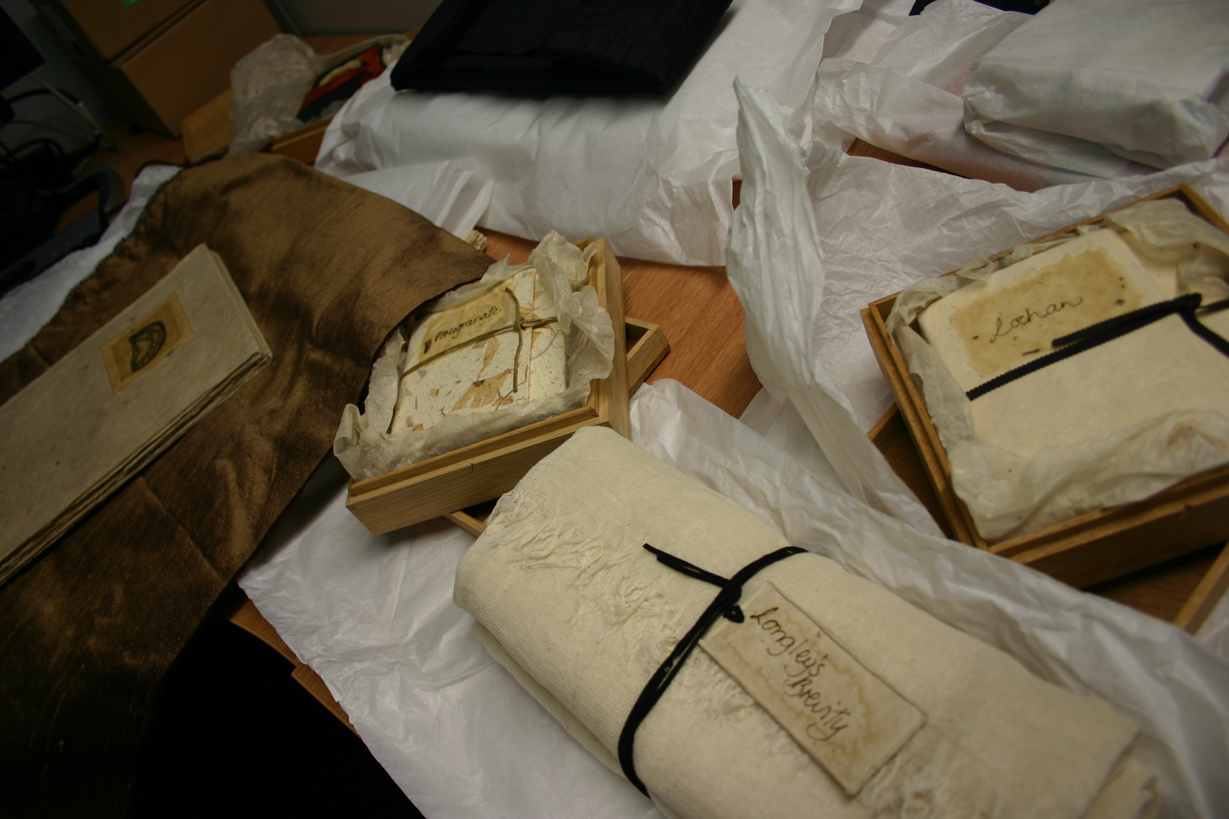
It was fascinating to watch Johnstone unpack the development of her art. As a creative writer, I will never, ever tire of hearing other artists discuss their inspirations, techniques, and also the challenges they face when taking on a project. Johnstone, for example, spoke about the fear of facing a pristine blank page, and then she showed us a creative method she used to combat that fear. She created a “paper bag proof” using cheap paper bags as pages and clipping them together. That way, she could draft freely without ruining an impossible-to-live-up-to piece of beautiful paper.
However, even this seemingly un-romantic solution was whimsical and wonderful. In Jean Johnstone’s art, paper bags become the canvas for unleashed creativity, and small, unassuming books can transform a poem into a world of unfathomable and unfolding sensory experience. A world you can hold in your hand.
–Cecilia Vinesse
Phase 1 Cataloguer
The University of St Andrews Library holds an archive set of all of Jean’s works, available for consultation in the Special Collections Reading Room. For a full list of our holdings, please see this entry in the Archives Catalogue.
A beautiful collection - sounds as though you had a wonderful session. But also congratulations to Cecilia, who described it so well that it was almost as though we, her readers, were there too.
[…] this opportunity to handle precious works of art, and I got even more excited about it when I read this account about Jean sharing her work with the Special Collection team at the University of St Andrews. Make […]